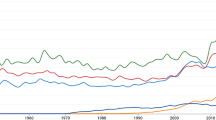Abstract
The scientific community has been studying for some time a measure capable of quantifying and monitoring the well-being of the population in the territories; this measure cannot be represented exclusively by economic components but also by dimensions that represent different domains of a mainly demographic-social nature. This paper aims to consider well-being from a multidimensional point of view and measure it for the 7983 Italian municipalities in order to highlight differences and similarities. To go down to such a fine territorial detail, it was necessary to use indicators implemented by administrative sources collected in a recently published portal. The application of composite indices allows a one-dimensional measurement that makes a complex phenomenon such as well-being more readable. From a territorial point of view, moreover, the work aims to overcome the administrative division already criticized in literature because it does not allow a reading corresponding to the real behaviors and lifestyles of citizens, embracing a classification more appropriate to the objective of the study. Since the elementary indicators taken into consideration are in some way influenced by reasons of proximity and/or territorial conformation, it was decided to use the classification in Ecoregions of Italy to assess whether the well-being, within the same municipality, “moves” in relation to the municipalities ecologically homogeneous. The results of the analyses present numerous aspects of originality in which the Ecoregions draw an interesting geography of the country.








Similar content being viewed by others
References
Bailey, R. G. (1983). Environmental management (Vol. 7, p. 365). New York: Springer. https://doi.org/10.1007/BF01866919.
Banini, T. (2013). Proporre, interpretare, costruire le identità territoriali. In: Identità territoriali. Questioni, metodi, esperienze a confronto. FrancoAngeli (pp. 9–27).
Becattini, G., Bellandi, M., Dei Ottati, G., & Sforzi, F. (2001). Il caleidoscopio dello sviluppo locale. Trasformazioni economiche nell’Italia contemporanea. Rosenberg & Sellier.
Calcagnini, G., & Perugini, F. (2019). A well-being indicator for the Italian provinces. Social Indicators Research, 142, 149–177. https://doi.org/10.1007/s11205-018-1888-1.
Daas, P., Ossen, S., Tennekes, M., Zhang, L-C., Hendriks, C., Foldal Haugen, K., Cerroni, F., Di Bella, G., Laitila, T., Wallgren, A., & Wallgren, B. (2011) Report on methods preferred for the quality indicators of administrative data sources. Second deliverable of workpackage 4 of the BLUE Enterprise and Trade Statistics project, September 28.
Diamantopulos, A., Riefler, P., & Roth, K. P. (2008). Advancing formative measurement models. Journal of Business Research, 61, 1203–1218.
Garofalo, G. (2014), Il Progetto ARCHIMEDE obiettivi e risultati sperimentali. Istat Working Paper, n. 9.
Istat. (2015). BES 2015. Il benessere equo e sostenibile in Italia. http://www.Istat.it/it/files/2015/12/Rapporto_BES_2015.pdf.
Maggino, F., & Nuvolati, G. (2012). Quality of life in Italy. Berlin: Springer.
Marans, R. W., & Stimson, R. (2011). Investigating quality of urban life: Theory, methods, and empirical research (p. 45)., Social indicators research series Berlin: Springer.
Mazziotta, M., & Pareto, A. (2013). Methods for constructing composite indices: One for all or all for one? Rivista Italiana di Economia Demografia e Statistica, LXVII(2), 67–80.
Mazziotta, M., & Pareto, A. (2016). On a generalized non-compensatory composite index for measuring socio-economic phenomena. Social Indicators Research, 127, 983–1003.
Mazziotta, M., & Pareto, A. (2018). Measuring well-being over time: The adjusted Mazziotta–Pareto index versus other non-compensatory indices. Social Indicators Research, 136, 967–976.
OECD. (2014). How’s life in your region? Measuring regional and local well-being for policy making. Paris: OECD Publishing. https://doi.org/10.1787/9789264217416-en.
Author information
Authors and Affiliations
Corresponding author
Additional information
Publisher's Note
Springer Nature remains neutral with regard to jurisdictional claims in published maps and institutional affiliations.
Rights and permissions
About this article
Cite this article
Bonardo, D., Quondamstefano, V. Measuring Well-Being in Italian (Eco)regions. Soc Indic Res 161, 433–456 (2022). https://doi.org/10.1007/s11205-020-02315-w
Accepted:
Published:
Issue Date:
DOI: https://doi.org/10.1007/s11205-020-02315-w




